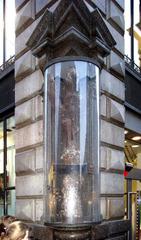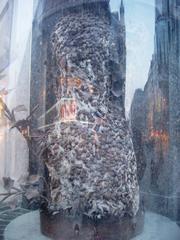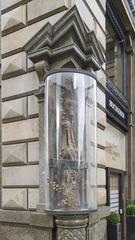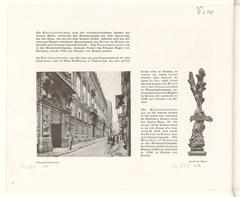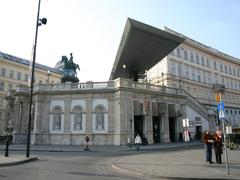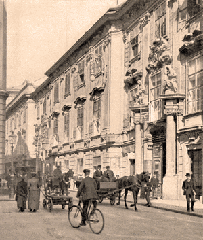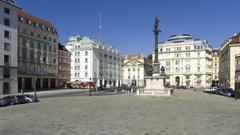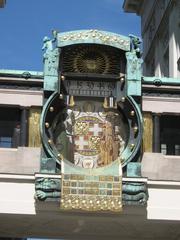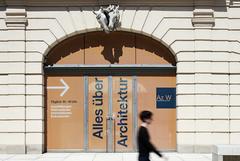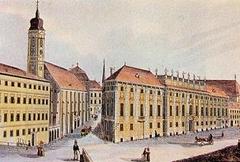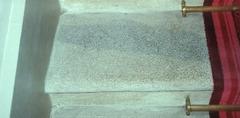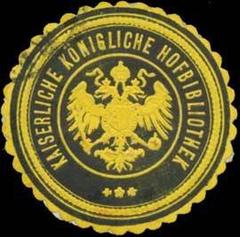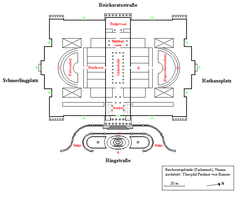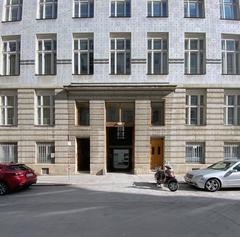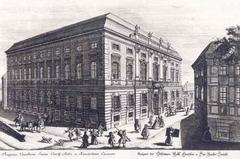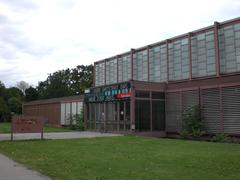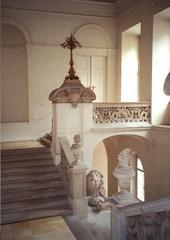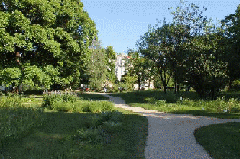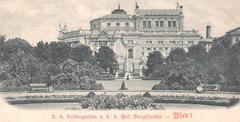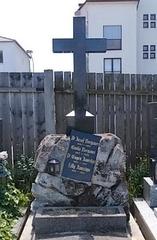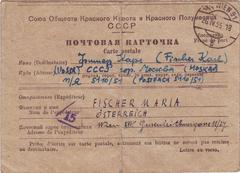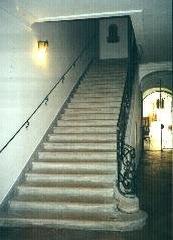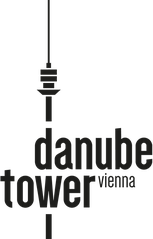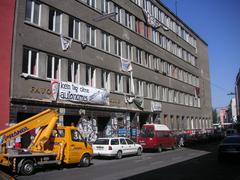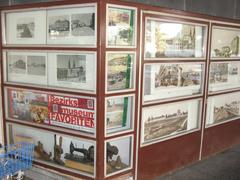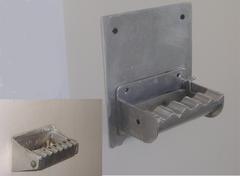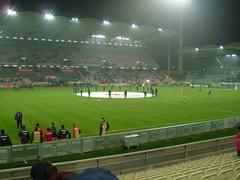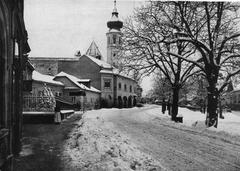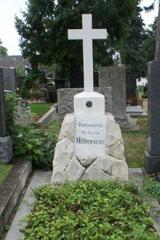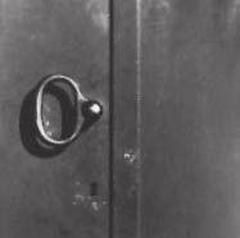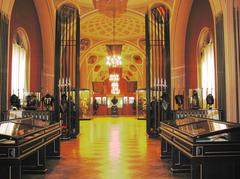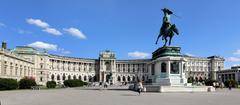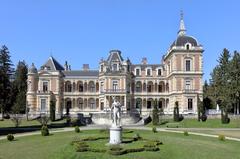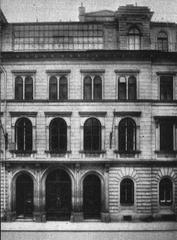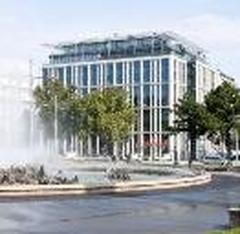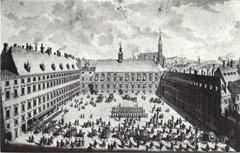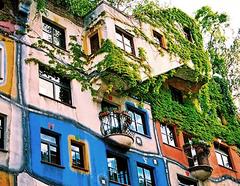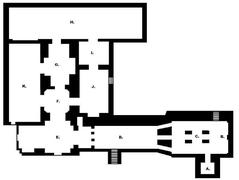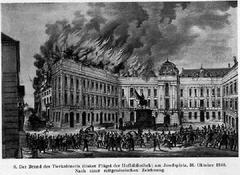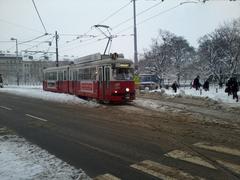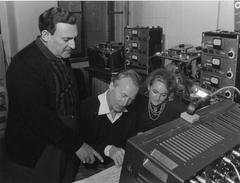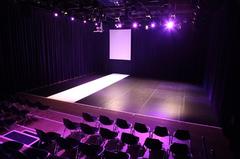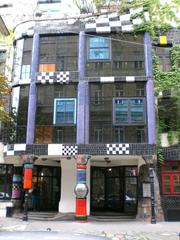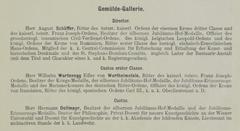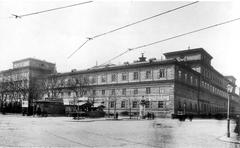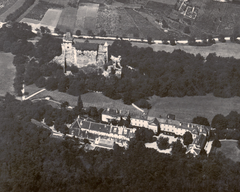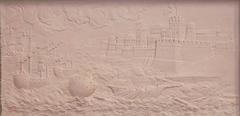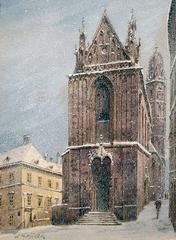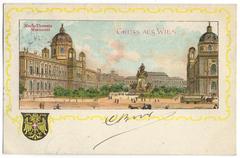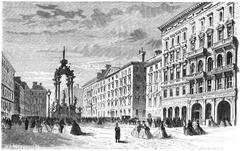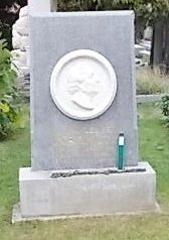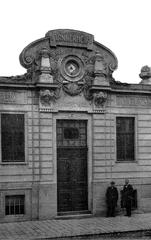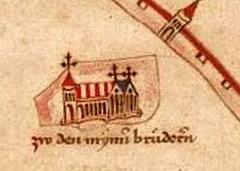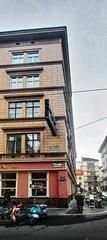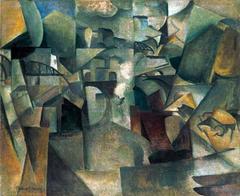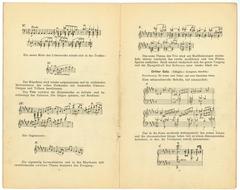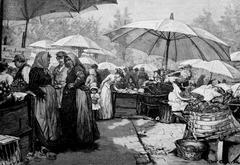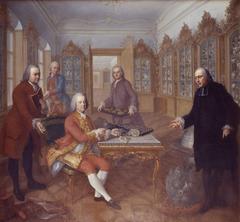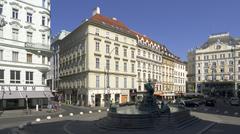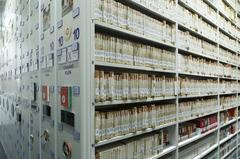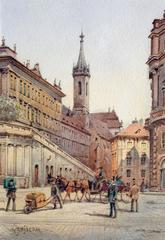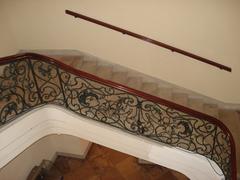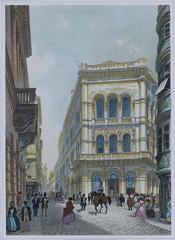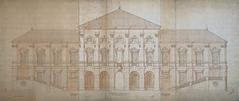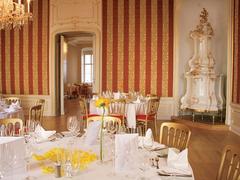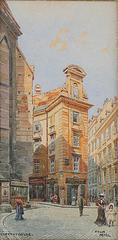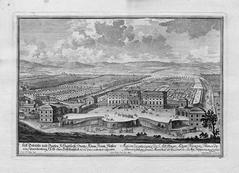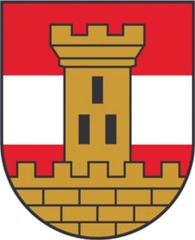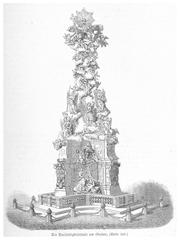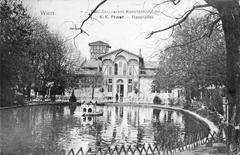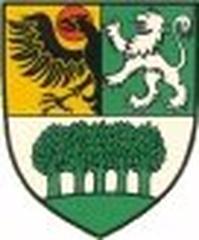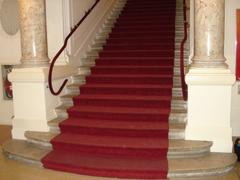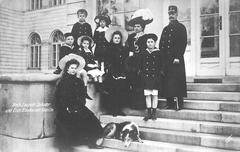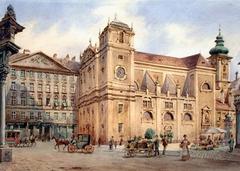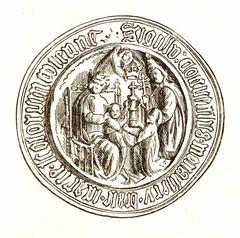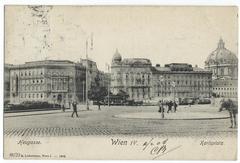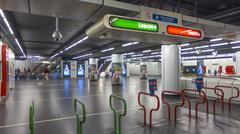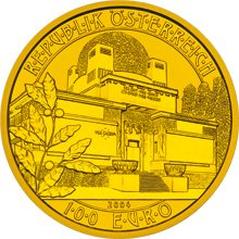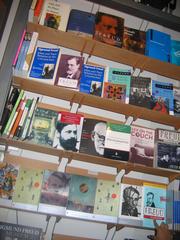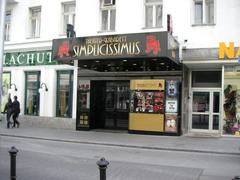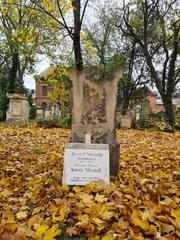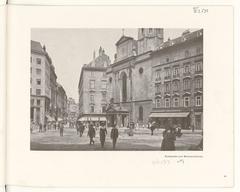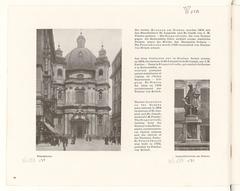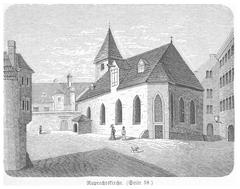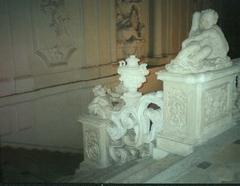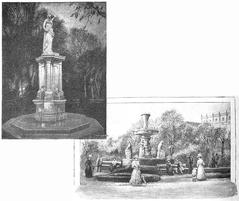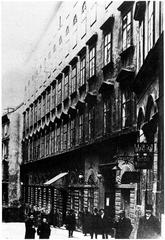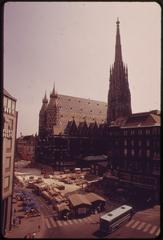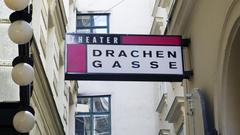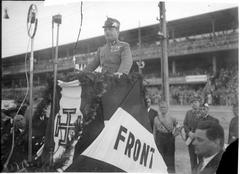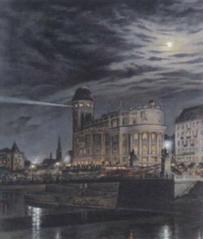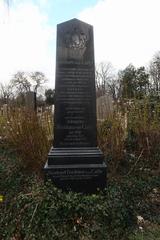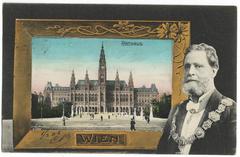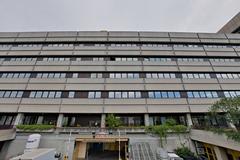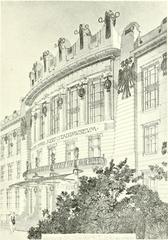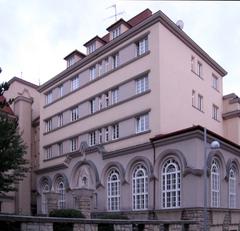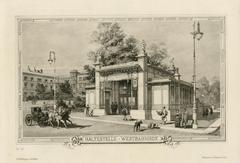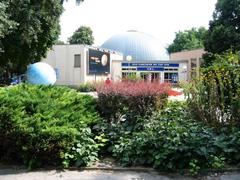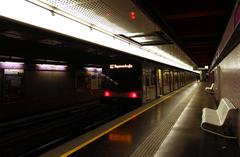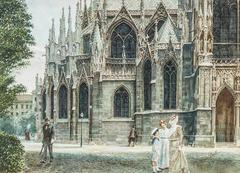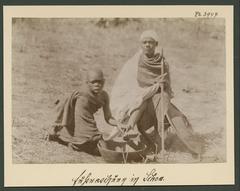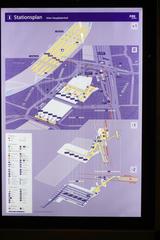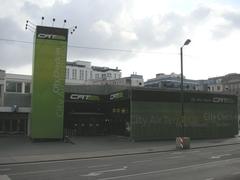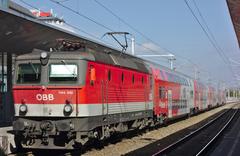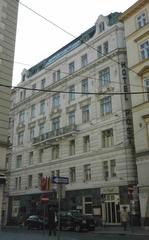
Stock Im Eisen: Tickets, Visiting Hours, and Historical Insights
Last Updated on: 17/08/2024
Discover everything you need to know about Stock Im Eisen, a historic landmark in Vienna, Austria.
Nestled in the bustling heart of Vienna, the Stock im Eisen stands as a captivating relic from the Middle Ages, drawing curious onlookers and history enthusiasts alike. This ancient tree trunk, now encased in glass within the Palais Equitable, has been a silent witness to centuries of Viennese history and tradition. The Stock im Eisen, translating to ‘staff in iron,’ is an emblem of the city’s rich cultural tapestry, intertwined with myths, legends, and historical significance (Fodor’s Travel). The nail-tree tradition, which started with traveling smiths and apprentices hammering nails into the tree for good luck, adds a layer of communal folklore to this intriguing artifact (Wikipedia). Whether you’re captivated by the legend of the Devil’s Lock or the theory that the Stock im Eisen was a surveying point marking Vienna’s mythic center, this guide aims to provide a comprehensive look at this fascinating site, along with practical visitor information and nearby attractions to enrich your Viennese experience.
Navigation Guide
- Discover the Mystique of Stock Im Eisen: History, Legends, and Visitor Information in Vienna
- Introduction
- Origins and Historical Context
- The Nail-Tree Tradition
- Myths and Legends
- The Devil’s Lock
- The Last Tree of an Ancient Forest
- Theories and Research
- Surveying Point Theory
- Research Findings
- Architectural and Artistic Significance
- Palais Equitable
- Visitor Information
- Visiting Hours and Tickets
- Travel Tips
- Cultural Impact
- Local Pride and Protection
- Tourist Attraction
- Related Sites and Experiences
- Nearby Attractions
- FAQ
- Conclusion
- Exploring Palais Equitable: Architectural Marvel and Historical Gem in Vienna
- Introduction
- Historical Background of Palais Equitable
- Architectural Design and Features
- The Stock im Eisen
- Restoration and Preservation
- Visitor Information
- Accessibility and Nearby Attractions
- Cultural Significance
- FAQ
- Call to Action
- Visiting Stock Im Eisen in Vienna: Hours, Tickets, and Nearby Attractions
- Introduction
- Visitor Information
- Location and Accessibility
- Opening Hours and Admission
- Best Time to Visit
- Visitor Tips
- Nearby Attractions
- St. Stephen’s Cathedral (Stephansdom)
- The Hofburg Palace
- Albertina Museum
- Kärntner Straße
- Vienna State Opera (Wiener Staatsoper)
- Graben and Kohlmarkt
- Mozarthaus Vienna
- The Plague Column (Pestsäule)
- Demel Café
- Michaelerplatz
- Practical Information
- Currency and Payments
- Language
- Safety
- Health and Emergency Services
- FAQ
- Conclusion
Discover the Mystique of Stock Im Eisen: History, Legends, and Visitor Information in Vienna
Introduction
Nestled in the heart of Vienna, the Stock im Eisen stands as a captivating relic from the Middle Ages. This ancient tree trunk, now encased in glass, has fascinated both locals and tourists for centuries. In this article, we will explore the rich history, intriguing legends, and practical visitor information about Stock im Eisen, making it a must-visit site for anyone in Vienna.
Origins and Historical Context
The Stock im Eisen, translating to “staff in iron,” is a relic from the Middle Ages, located at the corner of the Palais Equitable on Stock-im-Eisen-Platz, part of Stephansplatz. This ancient tree trunk is believed to be over 600 years old, with the first nails driven into it while it was still alive (Fodor’s Travel).
The Nail-Tree Tradition
The Stock im Eisen is a so-called nail-tree (Nagelbaum), into which hundreds of nails have been pounded over centuries. This tradition is thought to have started with traveling smiths and apprentices who hammered nails into the tree for good luck. This custom became particularly popular from 1715 onwards, especially among journeyman locksmiths (Wikipedia).
Myths and Legends
The Devil’s Lock
One of the most captivating legends surrounding the Stock im Eisen involves a young locksmith who allegedly sold his soul to the devil to become a master craftsman. In return, he created a lock so intricate that no key could open it. This lock was used to secure the last tree standing at Stephansplatz, which is now the Stock im Eisen. Interestingly, the lock is purely decorative and contains no mechanism (Vienna Würstelstand).
The Last Tree of an Ancient Forest
Another pervasive legend suggests that the Stock im Eisen is the last remaining tree of an ancient forest that once surrounded medieval Vienna. This tale adds a layer of mystique to the tree, making it a silent witness to the city’s evolving history (Amusing Planet).
Theories and Research
Surveying Point Theory
Leopold Schmidt, a historian, suggested that the tree might have originally been used as a surveying point, defining the “mythic centre” of Vienna. This theory adds a practical dimension to the tree’s historical significance, beyond its folkloric and mythical associations (Wikipedia).
Research Findings
Research conducted in the 1970s identified the trunk as a spruce tree, over 600 years old. The study revealed that the practice of driving nails into the tree continued for about forty years before the tree was finally cut down (Spotted by Locals).
Architectural and Artistic Significance
Palais Equitable
The Stock im Eisen is now housed in a niche of the Palais Equitable, a building constructed in 1891. The tree stands on a base made of Czech hornblende granite, and wrought iron vines have been added for decorative purposes. The building features the inscription “Zum Stock-im-Eisen” (At the Stock im Eisen) above the door and includes a bronze sculpture group of locksmith apprentices and the tree trunk by Rudolf Weyr (Wikipedia).
Visitor Information
Visiting Hours and Tickets
The Stock im Eisen is accessible year-round. There are no specific visiting hours or ticket fees required to view this fascinating relic, making it an easy addition to any Vienna itinerary.
Travel Tips
- Location: The Stock im Eisen is located at Stock-im-Eisen-Platz in Stephansplatz, Vienna.
- Accessibility: The site is easily accessible by public transportation. The closest U-Bahn station is Stephansplatz (U1, U3).
- Best Time to Visit: While the Stock im Eisen is a year-round attraction, it is particularly enchanting during the winter holidays when Vienna’s Christmas markets add to the festive atmosphere.
Cultural Impact
Local Pride and Protection
The Stock im Eisen is a source of local pride and has been protected over the years. During World War II, there were plans to move the relic to a museum in Munich, but it mysteriously disappeared and reappeared perfectly preserved after the threat of removal had passed (Fodor’s Travel).
Tourist Attraction
Visiting the Stock im Eisen is a year-round attraction, with no fee required to ponder its legend. It is particularly enchanting during the winter holidays when Vienna’s Christmas markets bring festive cheer, illuminating the mystery of this ancient artifact in a new light (Questoapp).
Related Sites and Experiences
Nearby Attractions
The Stock im Eisen is located near several other notable sites in Vienna, including the Albertina Museum, Franziskaner-Convent, Michaelerplatz, Volksgarten, and Burgtheater. These nearby attractions make it convenient for tourists to explore multiple historical and cultural landmarks in one visit (Questoapp).
FAQ
What are the visiting hours for Stock im Eisen?
The Stock im Eisen is accessible year-round with no specific visiting hours.
How much does it cost to visit Stock im Eisen?
There is no fee required to visit the Stock im Eisen.
Where is Stock im Eisen located?
The Stock im Eisen is located at Stock-im-Eisen-Platz in Stephansplatz, Vienna.
What is the best time to visit Stock im Eisen?
While the Stock im Eisen is a year-round attraction, it is particularly enchanting during the winter holidays.
Conclusion
The Stock im Eisen stands as a unique blend of history, myth, and cultural significance. From its origins as a nail-tree to its current status as a protected relic, it continues to captivate both locals and tourists alike. Whether you are drawn by its legends or its historical context, the Stock im Eisen offers a fascinating glimpse into Vienna’s rich past. Be sure to visit this intriguing site on your next trip to Vienna and immerse yourself in its mystique.
Stay Updated
For more information on Vienna’s historical sites and to stay updated on the latest travel tips, follow us on social media and check out our related posts.
Exploring Palais Equitable: Architectural Marvel and Historical Gem in Vienna
Introduction
Discover the Palais Equitable, a stunning architectural masterpiece located at the heart of Vienna. This article provides an in-depth look at its historical significance, architectural beauty, visitor guidelines, and nearby attractions, making it an essential stop on your Viennese itinerary.
Historical Background of Palais Equitable
The Palais Equitable is an architectural gem located at the corner of Kärntner Straße and Graben in Vienna’s Innere Stadt. This building, constructed between 1887 and 1891, was designed by Andreas Streit for The Equitable Life Assurance Society of the United States. The site previously housed five small medieval buildings, which were demolished between 1856 and 1886 to make way for the new structure and to expand Kärntner Straße (Wikipedia).
Architectural Design and Features
The Palais Equitable is renowned for its richly detailed façade, which features American eagles and other intricate ornamentation. The building’s design incorporates elements from various architectural styles, creating a unique and visually striking appearance. The main doors of the Palais Equitable are adorned with bronze reliefs by Rudolf Weyr, depicting the history of the Stock im Eisen. Additional ornamentation was provided by Viktor Oskar Tilgner and Johann Schindler (Wikipedia).
The interior of the Palais Equitable is equally impressive. The dramatic stairway and vestibule are constructed from marble sourced from Hallein and granite from Saxony. The glass-covered interior courtyard is completely clad in tile and maiolica, adding to the building’s opulent feel. A painting on the ceiling of the lobby and the stucco ornamentation on the second floor were created by Julius Victor Berger (Wikipedia).
The Stock im Eisen
The Stock im Eisen is a significant historical artifact embedded in the Palais Equitable. This section of a tree trunk, into which hundreds of nails have been hammered since the Middle Ages, is enclosed in glass and located in a niche on the Kärntner Straße corner of the building. The earliest written mention of the Stock im Eisen dates back to 1533, and it is surrounded by legends, including tales involving the Devil (Wikipedia).
Restoration and Preservation
The Palais Equitable, like many historical buildings in Vienna, suffered damage during World War II. However, it was restored in 1949, ensuring that its architectural and historical significance was preserved for future generations. In 1997, the entrance area was renovated by Rüdiger Lainer, further enhancing the building’s grandeur (Wikipedia).
Visitor Information
Visitors to the Palais Equitable can appreciate its architectural beauty and historical significance. The building houses offices of various companies and organizations, including the Austrian division of Sal. Oppenheim and a retail outlet for Augarten Porcelain. This mix of commercial and historical elements makes the Palais Equitable a dynamic part of Vienna’s cityscape.
Visiting Hours: The building is accessible during regular business hours, but it’s advisable to check specific visiting hours in advance.
Tickets: Entry is generally free, but certain areas may require permission or special access.
Accessibility and Nearby Attractions
The Palais Equitable is easily accessible via the Stephansplatz U-Bahn station, one of the busiest in Vienna and the only junction between the U1 and U3 underground lines. This central location makes it convenient for tourists to visit other nearby attractions, such as the Virgilkapelle, a medieval chapel discovered 12 meters underground during excavations for the subway in 1973 (Wikipedia).
Cultural Significance
The Stock im Eisen and the Palais Equitable are not just architectural landmarks; they are also cultural symbols of Vienna’s rich history. The tradition of hammering nails into the Stock im Eisen dates back to the Middle Ages and is believed to have been a ritual to ward off demons. This practice, along with the legends surrounding the Stock im Eisen, adds a layer of mystique and cultural depth to the site (All About Vienna).
FAQ
Q: What are the Palais Equitable’s visiting hours?
A: The building is accessible during regular business hours. Check specific visiting hours in advance.
Q: Is there an entry fee for Palais Equitable?
A: Entry is generally free, but certain areas may require permission or special access.
Q: How can I get to Palais Equitable?
A: The Palais Equitable is easily accessible via the Stephansplatz U-Bahn station, servicing the U1 and U3 lines.
Q: Are there any guided tours available?
A: Guided tours may be available through local tour operators. It’s best to check in advance.
Q: What nearby attractions can I visit?
A: Nearby attractions include St. Stephen’s Cathedral, Haas House, and the Virgilkapelle.
Call to Action
Plan your visit to the Palais Equitable and explore this fascinating blend of architectural beauty and historical significance. For more travel tips, follow us on social media and download our mobile app Audiala. Don’t miss out on other related posts to enhance your Viennese experience.
Visiting Stock Im Eisen in Vienna: Hours, Tickets, and Nearby Attractions
Introduction
Discover the fascinating history and allure of Stock Im Eisen, a historic monument located in the heart of Vienna. This guide will provide you with all the essential visitor information, highlight must-see nearby attractions, and offer practical travel tips to make your visit memorable.
Visitor Information
Location and Accessibility
Stock Im Eisen is located in the heart of Vienna, Austria, at the intersection of Kärntner Straße and Graben, adjacent to Stephansplatz. This central location makes it easily accessible by various modes of transportation. The nearest metro station is Stephansplatz, served by lines U1 and U3, which provides direct access to the site. Additionally, several tram and bus lines operate in the vicinity, making it convenient for visitors to reach the area.
Opening Hours and Admission
The Stock Im Eisen itself is an outdoor exhibit and can be viewed at any time of the day or night. However, the surrounding area, including shops and cafes, generally operates from 10:00 AM to 8:00 PM. There is no admission fee to view the Stock Im Eisen, making it an accessible attraction for all visitors.
Best Time to Visit
The best time to visit Stock Im Eisen is during the spring (April to June) and autumn (September to October) when the weather is mild and pleasant. These periods also coincide with fewer tourist crowds, allowing for a more relaxed experience. Winter visits can be magical due to the festive decorations and Christmas markets, but be prepared for colder temperatures.
Visitor Tips
- Photography: The Stock Im Eisen is a popular photo spot. Early morning or late afternoon visits can provide the best lighting for photography.
- Guided Tours: Consider joining a guided walking tour of Vienna that includes Stock Im Eisen as part of the itinerary. This can provide deeper historical context and interesting anecdotes.
- Nearby Amenities: The area around Stock Im Eisen is bustling with cafes, restaurants, and shops. Take advantage of these amenities to rest and refresh during your visit.
Nearby Attractions
St. Stephen’s Cathedral (Stephansdom)
Located just a stone’s throw away from Stock Im Eisen, St. Stephen’s Cathedral is one of Vienna’s most iconic landmarks. This Gothic masterpiece dates back to the 12th century and features a stunning multi-colored tile roof and a towering spire. Visitors can explore the cathedral’s interior, climb the South Tower for panoramic views of Vienna, and visit the catacombs beneath the cathedral.
The Hofburg Palace
A short walk from Stock Im Eisen, the Hofburg Palace is a must-visit for history enthusiasts. This former imperial palace now houses several museums, including the Imperial Apartments, the Sisi Museum, and the Silver Collection. The palace complex also includes the Spanish Riding School, where visitors can watch performances by the famous Lipizzaner horses.
Albertina Museum
The Albertina Museum, located near the Hofburg Palace, boasts one of the largest and most important print rooms in the world. The museum’s collection includes works by artists such as Monet, Picasso, and Klimt. In addition to its permanent collection, the Albertina hosts rotating exhibitions that showcase a wide range of artistic styles and periods.
Kärntner Straße
Kärntner Straße is one of Vienna’s most famous shopping streets, running from Stephansplatz to the Vienna State Opera. This pedestrian-friendly street is lined with a mix of high-end boutiques, international brands, and charming cafes. It’s an ideal place for a leisurely stroll, window shopping, or enjoying a coffee at one of the many outdoor terraces.
Vienna State Opera (Wiener Staatsoper)
The Vienna State Opera, located at the end of Kärntner Straße, is one of the world’s leading opera houses. The building itself is an architectural marvel, and its interior is equally impressive. Visitors can take guided tours of the opera house to learn about its history and architecture or attend a performance toexperience Vienna’s rich musical heritage firsthand.
Graben and Kohlmarkt
Graben and Kohlmarkt are two of Vienna’s most elegant shopping streets, located near Stock Im Eisen. Graben is known for its historic architecture and upscale shops, while Kohlmarkt is home to luxury brands and traditional Viennese jewelers. Both streets offer a blend of shopping, dining, and historical landmarks, making them perfect for a leisurely exploration.
Mozarthaus Vienna
Mozarthaus Vienna, located a short walk from Stock Im Eisen, is the former residence of Wolfgang Amadeus Mozart. The museum offers a glimpse into the life and work of the famous composer, with exhibits that include original manuscripts, personal items, and interactive displays. Visitors can explore the apartment where Mozart lived and composed some of his most famous works.
The Plague Column (Pestsäule)
The Plague Column, located on Graben, is a striking Baroque monument erected in the late 17th century to commemorate the end of the Great Plague in Vienna. The column features intricate sculptures and reliefs that depict scenes of the plague and the city’s deliverance. It’s a significant historical landmark and a testament to Vienna’s resilience.
Demel Café
For a taste of traditional Viennese pastries, visit Demel Café, located near Stock Im Eisen. Established in 1786, Demel is one of Vienna’s oldest and most famous pastry shops. Visitors can enjoy a variety of cakes, pastries, and chocolates in an elegant setting. The café also offers a glimpse into the art of pastry-making with its open kitchen.
Michaelerplatz
Michaelerplatz, located near the Hofburg Palace, is a historic square that features a mix of architectural styles, from Roman ruins to Baroque and Art Nouveau buildings. The square is home to the Looshaus, a pioneering modernist building designed by architect Adolf Loos. Michaelerplatz is also the site of the Michaelerkirche, a church with a history dating back to the 13th century.
Practical Information
Currency and Payments
Austria uses the Euro (€) as its currency. Credit and debit cards are widely accepted in Vienna, but it’s advisable to carry some cash for smaller purchases and in case you visit establishments that do not accept cards.
Language
The official language of Austria is German. While many people in Vienna speak English, especially in tourist areas, learning a few basic German phrases can enhance your experience and help with communication.
Safety
Vienna is considered one of the safest cities in the world. However, as with any major city, it’s important to stay vigilant and be aware of your surroundings, especially in crowded areas. Keep an eye on your belongings to avoid pickpocketing.
Health and Emergency Services
Vienna has excellent healthcare facilities. In case of an emergency, dial 112 for immediate assistance. Pharmacies are widely available and can provide over-the-counter medications and advice.
FAQ
Q: What are the visiting hours for Stock Im Eisen? A: Stock Im Eisen is an outdoor exhibit and can be viewed at any time of the day or night.
Q: Is there an admission fee to see Stock Im Eisen? A: No, there is no admission fee to view Stock Im Eisen.
Q: How can I reach Stock Im Eisen using public transportation? A: The nearest metro station is Stephansplatz, served by lines U1 and U3. Several tram and bus lines also operate in the vicinity.
Q: What is the best time of year to visit Stock Im Eisen? A: The best times to visit are during spring (April to June) and autumn (September to October) when the weather is mild and pleasant.
Conclusion
Visiting Stock Im Eisen offers a unique glimpse into Vienna’s rich history and culture. By exploring this historic site and the surrounding attractions, you can experience the charm and elegance of Vienna firsthand. Don’t forget to check out related posts and follow us on social media for more updates and travel tips.
Summary and Final Thoughts
The Stock im Eisen is more than just an ancient tree trunk; it is a symbol of Vienna’s enduring history and cultural richness. From its origins as a nail-tree to its current status as a protected relic, it continues to captivate both locals and visitors alike. Housed in the architectural marvel of Palais Equitable, the Stock im Eisen stands as a testament to the city’s ability to blend history, myth, and modernity seamlessly. Whether you’re visiting for its historical significance, its captivating legends, or simply to experience a unique part of Vienna’s heritage, the Stock im Eisen offers a glimpse into the city’s vibrant past. As you explore this and nearby attractions, you’ll find that Vienna’s charm lies not just in its grand palaces and museums but also in its hidden gems like the Stock im Eisen. Be sure to immerse yourself in the mystique of this ancient artifact on your next trip to Vienna and make the most of your visit by exploring the surrounding cultural landmarks and local amenities (Questoapp).
Citations and Further Reading
- Fodor’s Travel. (n.d.). Stock Im Eisen. Retrieved from Fodor’s Travel
- Wikipedia. (n.d.). Stock im Eisen. Retrieved from Wikipedia
- Vienna Würstelstand. (n.d.). Historical Spots in Vienna That You Probably Don’t Know About. Retrieved from Vienna Würstelstand
- Amusing Planet. (2017). Stock Im Eisen: Vienna’s Nail Tree. Retrieved from Amusing Planet
- Spotted by Locals. (n.d.). Stock Im Eisen. Retrieved from Spotted by Locals
- Questoapp. (n.d.). Stock Im Eisen. Retrieved from Questoapp
- Wikipedia. (n.d.). Palais Equitable. Retrieved from Wikipedia
- Wikipedia. (n.d.). Stephansplatz, Vienna. Retrieved from Wikipedia
- All About Vienna. (n.d.). Stephansplatz: Vienna’s Main Square. Retrieved from All About Vienna
- Official Vienna Tourism Website. (n.d.). Retrieved from Official Vienna Tourism Website

